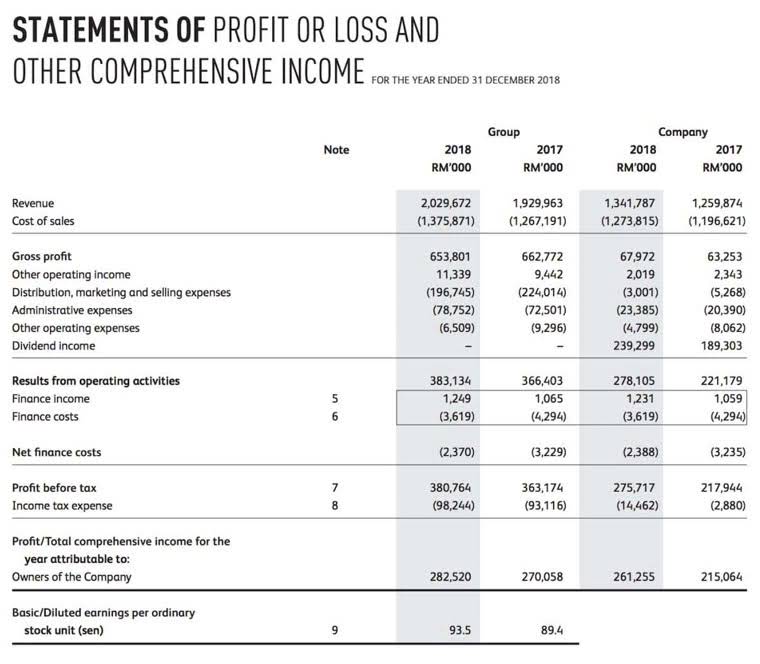Best Cloud Accounting Software

In Wave, users can separate personal and business expenses, which is ideal for freelancers or side hustlers who don’t have a separate business bank account. Additionally, FreshBooks is impressively easy to use as the software is free of accounting jargon and boasts an easy-to-navigate interface. Even business owners who don’t have much experience with accounting should be able to get a handle on it quickly, as FreshBooks’ convenient customer support means help is only a phone call away.
QuickBooks Solopreneur: Best Accounting Software For Freelancers
If your small business has less than five employees, you unearned revenue can use the free version of NCH for your accounting software. The free version lacks some of the bigger features suitable for larger enterprises, but still has much to offer. Examples of financial statements you can generate include income statements, balance sheets, profit and loss (P&L) statements and sales analysis by item, customer and salesperson.

Importance of Using Accounting Software for Small Businesses

The best small business accounting software helps small business owners gain control of their business’s finances. Xero, regrettably, holds an abysmal “F” rating from the Better Business Bureau. However, on other third-party review sites, like Trustpilot, its reputation is much better. Recent reviews were mostly 5 stars and said that customer service team members at Xero were extremely polite and helpful. Almost every review starts by mentioning an issue with Xero and then how the customer service team solved it.
Freshbooks: Best for client-based businesses
It comes packed with plenty of accounting features aimed at smoothing the process for SMB’s. Lookout for reporting functionality, bank syncing and billing tools too, while it’s also possible to use ZipBooks for day to day administration duties including expense tracking and invoicing. Rippling is often praised as an all-in-one HR cloud platform; however, in terms of accounting, its separate feature Rippling Spend is gunning for the best accounting software in the marketplace. Using the aggregated employee data, Rippling Spend provides real-time integrated financial visibility across your company. It offers easy tracking for receipts, company cards, general expense tracking, and much more. Enterprise resource planning (ERP) software includes all the features of accounting software, plus additional features such as CRM, inventory management and project management.
The Complete QuickBooks Versions Comparison Guide
If you don’t need quite as many features as Wave offers, ZipBooks is a solid free accounting software alternative. free accounting software for small business Even though it’s free, it doesn’t limit the number of invoices you can send (like Xero) or clients you can bill (like FreshBooks) per month—you can access unlimited customizable invoices and accept payments too. ZipBooks’ paid plan starts at $15 a month and offers better bookkeeping and automation features than its free accounting plan.


For example, it offers a document storage tool that allows you to drag and drop, upload or email documents to the platform, then sort and file them; however, you need to use a customizable filing system. From there, you can easily retrieve documents to attach to invoices as necessary. Once you’re set up in Xero you can import all your data from your previous accounting software, including the chart of accounts, invoices, bills, contacts, and fixed assets. We recommend you work with an accountant or bookkeeper, preferably one with Xero experience, when you move to Xero online accounting software in the US. Xero accounting software helps you do your financial admin, such as bank reconciliations and managing cash flow, but it won’t replace your accountant’s advice on your specific business needs and strategy. While Xero handles everyday financial tasks, your accountant works ‘big double declining balance depreciation method picture’ services and advice on your numbers, processes, and compliance.
This makes Zoho Books well suited to businesses that sell physical products. You should assess whether the software includes essential features in its base plan or if important tools require costly add-ons. Some platforms charge extra for additional users, which can become expensive as your business grows. Unlike many accounting tools, Sage Intacct provides robust inventory tracking features, allowing businesses to monitor stock levels, manage supplier orders, and automate replenishment. It also includes Remote Data Access, enabling teams to work from different locations. Zoho Books streamlines accounting, but manual expense tracking and reconciliation can slow businesses down.
- When it comes to invoicing, Zoho Books offer easy to interpret templates and lets businesses set up recurring invoices, and automate payment reminders, cutting down on manual work.
- While it has very few user reviews, users who posted say that it is an easy-to-use solution with task tracking and lead capturing tools.
- FreshBooks only supports 1 user (additional users cost an extra $11/month per user).
- However, businesses looking for MTD ready software will need to pay for the more expensive plan.
- By doing your due diligence, you can be sure that you are choosing a product that meets your needs and will help you manage your business finances effectively.
- Explore cloud and desktop-based accounting software with subscription and perpetual licensing options like AccountingSuite, Xero, TallyPrime, and Striven.
Pricing:
If you plan to stay lean and handle most of the bookkeeping yourself, I strongly prefer Xero. Kashoo has more limited integrations than some of the other sites in our review. This accounting software will natively integrate with Square and Stripe for payment processing. However, further integrations aren’t listed, creating a much smaller range of integrations than we’ve seen with competitors. To get started with Kashoo, you’ll need to pick between the two accounting software options developed by this platform. Zoho Books has some limitations for integrations, as some come with higher tiers of service.
We’ve recommended five accounting software platforms in total, which suit a variety of businesses. No matter what type of business you run, accounting is a core part of it. The right accounting software can help you accurately keep track of incomings and outgoings, and submit timely tax returns. Many businesses rely on CRM systems, e-commerce platforms, and payment processors.
Net Working Capital NWC Formula + Calculator

The buyer would then inject their own working capital post-acquisition, either through equity contributions or a bank loan. Definitional adjustments specify which items to include or exclude in most cash-free, debt-free transactions. Understanding what belongs in NWC is critical for making accurate calculations. In this guide, we’ll explore why NWC matters, how to calculate it effectively, and what to consider during the due diligence process.

Example of a numerical calculation

But a more precise definition is needed when it comes to selling your company. Net working capital, or working capital, is a financial metric that gives businesses a quick snapshot of their current assets versus current liabilities. By calculating net working capital, companies can understand how much is in the tank to cover any short-term costs. Current liabilities refer to all loans or expenses you owe within the maximum span of one year or the company’s standard operating cycle.
How to Set the NWC Peg

It may take longer-term funds or assets to replenish the Retail Accounting current asset shortfall because such losses in current assets reduce working capital below its desired level. Moreover, it’s essential for businesses to adapt their net working capital strategies based on prevailing market conditions. In times of economic uncertainty or industry volatility, maintaining a conservative approach to investments and a focus on cash reserves can provide a buffer against potential downturns. By continuously analyzing market trends and adjusting strategies accordingly, businesses can navigate challenges more effectively, ensuring that they remain agile and prepared for future opportunities.
Learn best practices for purchasing, finance, and more
- In mergers and acquisitions, Net Working Capital provisions are often intensely negotiated yet rarely discussed in press releases.
- The reason is that cash and debt are both non-operational and do not directly generate revenue.
- From Year 0 to Year 2, the company’s NWC reduced from $10 million to $6 million, reflecting less liquidity (and more credit risk).
- Choose CFI for unparalleled industry expertise and hands-on learning that prepares you for real-world success.
- Even though the payment obligation is mandatory, the cash remains in the company’s possession for the time being, which increases its liquidity.
Instead of continuing to make minimum payments, see if you can afford to pay more each month. Once you’ve paid off that calculate net working capital debt, apply the same principle to the debt with the next highest interest rate, and so on. As for the cost of goods sold, you may have earned the right to ask suppliers for better rates or discounts on certain orders. Customers with long track records of orders and timely payments shouldn’t worry about overstepping their boundaries by asking for occasional discounts.
- Developing a working capital target that’s acceptable to both parties and clearly defining NWC in the purchase agreement are crucial steps in avoiding this.
- When accounting for deal-specific dynamics, assumptions on revenue synergies and cost optimizations can impact working capital.
- Accurate working capital projections are essential for assessing liquidity, optimizing operational strategies, and ensuring deal success in M&A or LBO transactions.
- Working capital adjustments are crucial in situations in which working capital is subject to change before closing.
- Small business lenders may help you cover financial obligations until you can improve your working capital ratio.
This means you have $1.60 in short-term assets for every $1 in short-term obligations. Anything above one means that the company can cover its obligations at least one time over. In this guide, we’ll explore exactly how NWC works as your operational lifeline, how to calculate it correctly, and most importantly, how to leverage this metric to strengthen your company’s financial position. Below is a break down of subject weightings in the FMVA® financial analyst program.
The Inventory Count
Based on the balance sheet numbers, the business has $40,000 in https://qcdoctors.mx/2023/07/13/11-best-strategies-to-maximize-profits-in-business/ working capital that can be used to pay bills or invest in the business. With this ratio, you identify, in number of days of sales, the financial safety margin you have. Calculating overall net working capital provides you with useful data to help you interpret your balance sheet and keep your finances under control. Working capital is calculated from the functional balance sheet, either from the top or the bottom.

Example Calculation

To calculate the change in net working capital (NWC), the current period NWC balance is subtracted from the prior period NWC balance. For a short-term business loan, borrowers must have a 680+ personal credit score, 2+ years in business, and $250,000+ in annual revenue. Companies like United Capital Source, on the other hand, frequently work with younger, under-capitalized businesses. The right type of business loan could supply that extra capital and eventually generate more revenue, profits, and, you guessed it, working capital.
